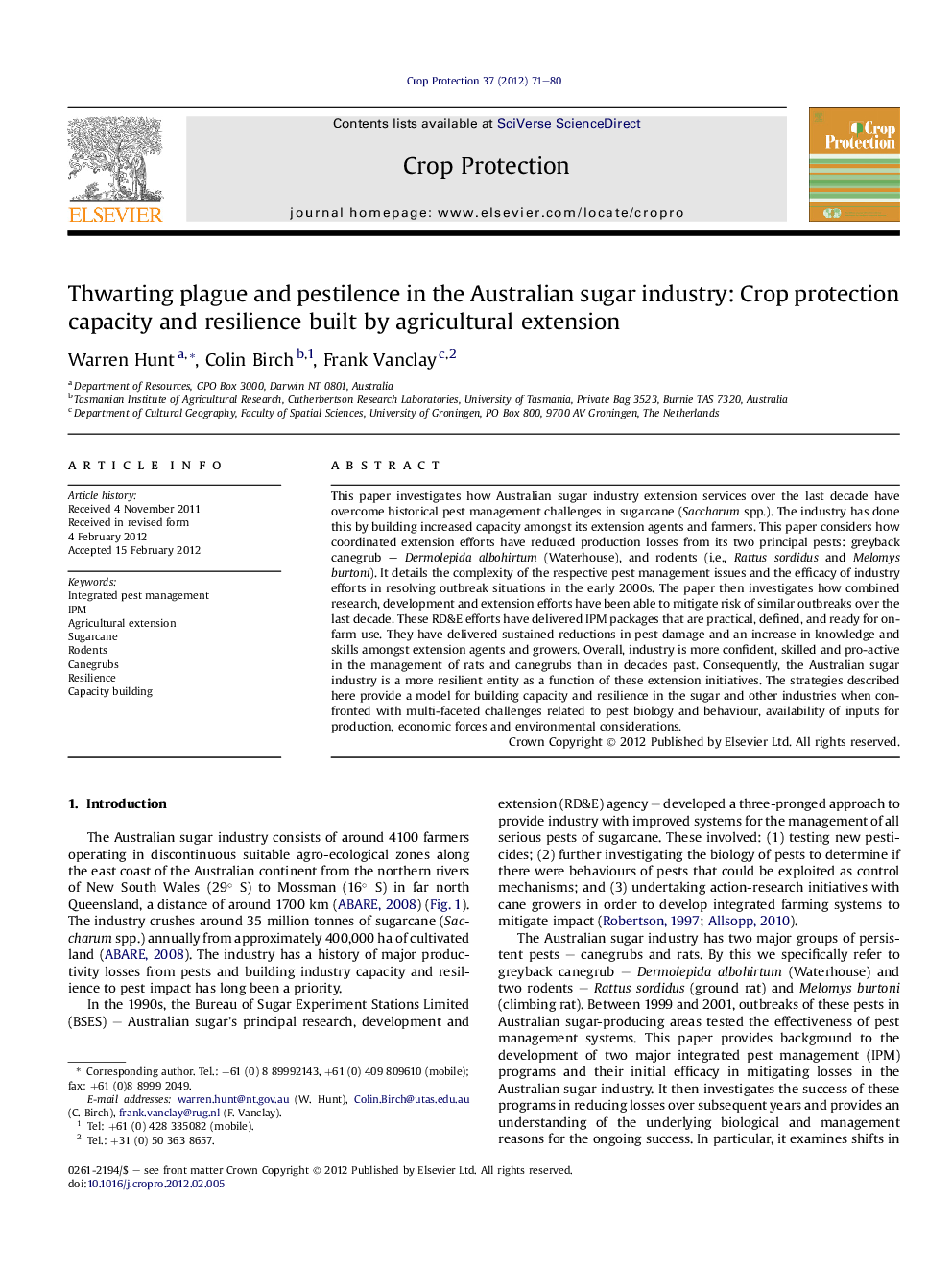| کد مقاله | کد نشریه | سال انتشار | مقاله انگلیسی | نسخه تمام متن |
|---|---|---|---|---|
| 4506343 | 1624350 | 2012 | 10 صفحه PDF | دانلود رایگان |

This paper investigates how Australian sugar industry extension services over the last decade have overcome historical pest management challenges in sugarcane (Saccharum spp.). The industry has done this by building increased capacity amongst its extension agents and farmers. This paper considers how coordinated extension efforts have reduced production losses from its two principal pests: greyback canegrub – Dermolepida albohirtum (Waterhouse), and rodents (i.e., Rattus sordidus and Melomys burtoni). It details the complexity of the respective pest management issues and the efficacy of industry efforts in resolving outbreak situations in the early 2000s. The paper then investigates how combined research, development and extension efforts have been able to mitigate risk of similar outbreaks over the last decade. These RD&E efforts have delivered IPM packages that are practical, defined, and ready for on-farm use. They have delivered sustained reductions in pest damage and an increase in knowledge and skills amongst extension agents and growers. Overall, industry is more confident, skilled and pro-active in the management of rats and canegrubs than in decades past. Consequently, the Australian sugar industry is a more resilient entity as a function of these extension initiatives. The strategies described here provide a model for building capacity and resilience in the sugar and other industries when confronted with multi-faceted challenges related to pest biology and behaviour, availability of inputs for production, economic forces and environmental considerations.
► IPM has reduced impact from canegrubs and rats in the Australian sugar industry.
► IPM programs have built capacity amongst cane growers.
► Result is an Australian sugar industry more resilient to pest impact.
► The findings can act as models for other agricultural industries internationally.
Journal: Crop Protection - Volume 37, July 2012, Pages 71–80